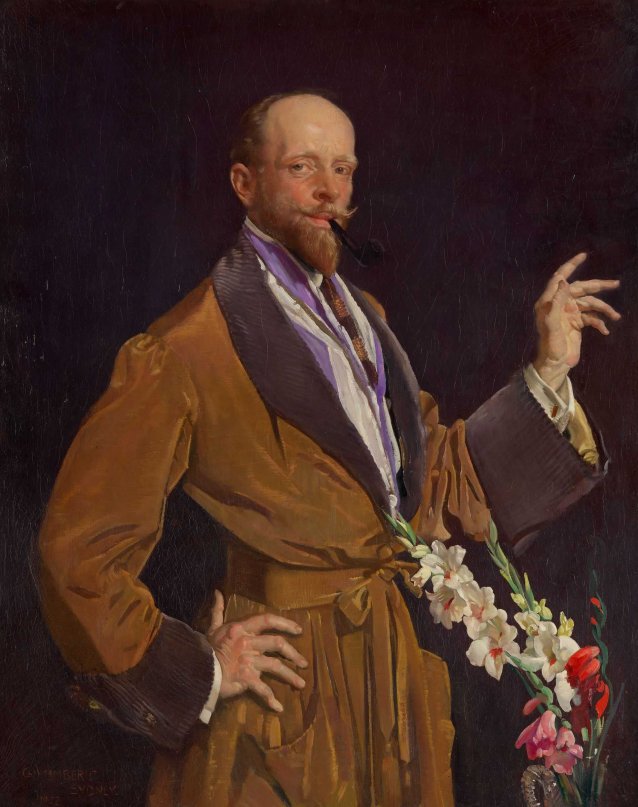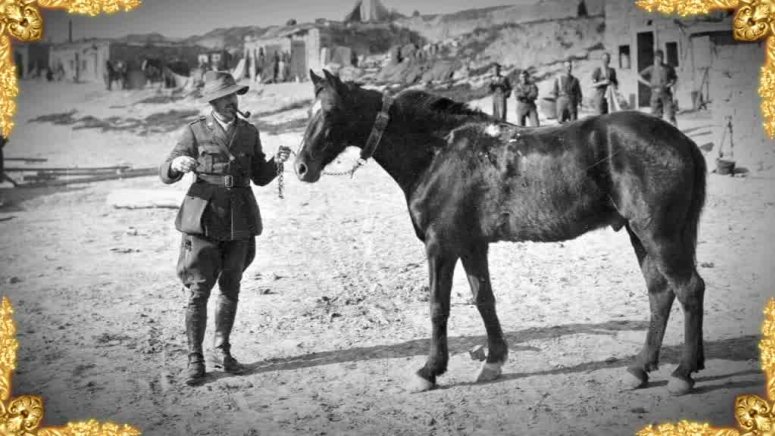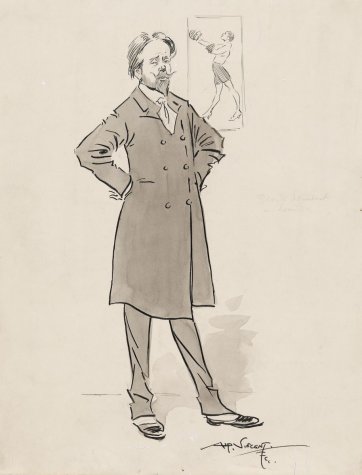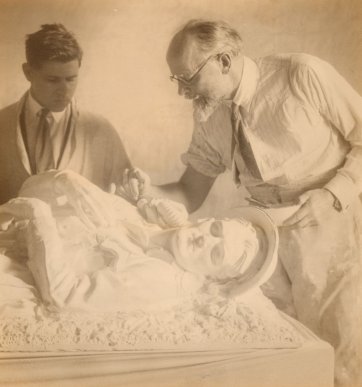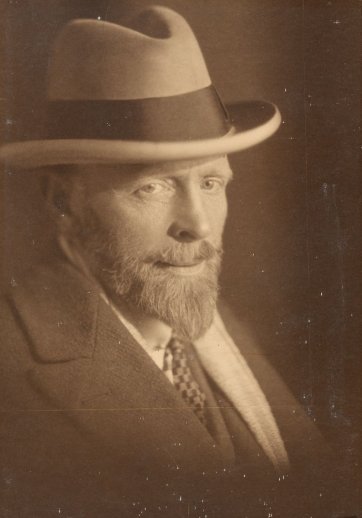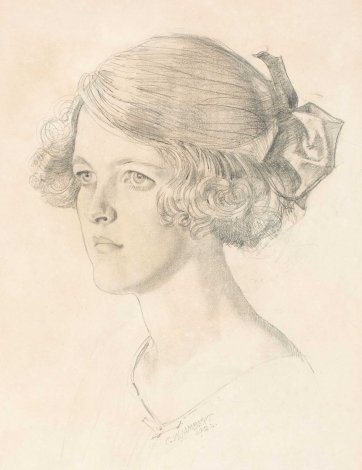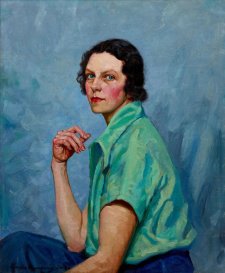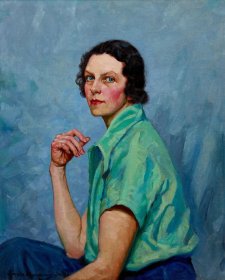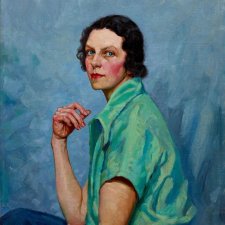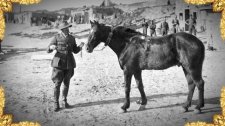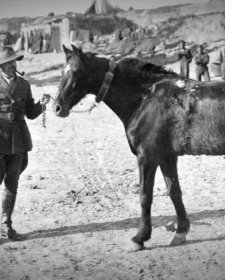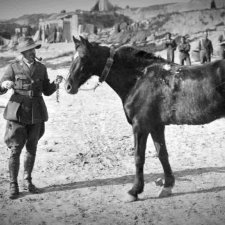Self portrait with gladioli by George Lambert. This is a commanding oil painting on canvas and including the frame, 159cm high and 132cm wide. The elaborate gold frame has a double edge and is approximately 30cm wide with ornate textured, gold foliage decorating the corners and central sections of each side.
George is larger than life, from his upper thigh to the crown of his head, wearing a luxurious robe and assuming a flamboyant pose. Standing at ease, his back arched, with one hand on his hip and the other hand extended upwards in an affected gesture.
George stands in the centre of the composition, against a matt, deep purple background. His body is on an angle with his left upper arm obscured from view, and his face turned towards us.
George’s hairline is receding. His remaining hair is short and swept back behind his ears, revealing right ear. His hair is light brown, with blond and copper highlights. His pale, dome shaped forehead has a sheen across it. He has a slightly furrowed brow, between full eyebrows, drawn over hazel eyes hooded with heavy eyelids. He looks directly at us with a weary yet quizzical gaze.
His cheeks are flushed a rosy pink and his nose is long and straight with flared nostrils. He has a neat manicured moustache, the ends of which are waxed and turned upwards, extending just beyond the slightly upturned corners of his mouth. His pink, full lips are closed around a black pipe, which dangles from the left-hand side of his mouth. His well- groomed beard follows his jaw line, trimmed close to his cheeks and then from his chin it is longer, thicker and shaped to a blunt point.
He wears a sumptuous old gold velvet smoking jacket with wide, dark taupe corduroy lapels and cuffs, with deep pockets on either side in the front.
The jacket gapes at the front, revealing his slim chest. Around his neck, the stiff high collar of an ivory, cotton dress shirt over which is draped a long violet and white silk scarf and the hint of a dark taupe and gold ribbon.
The velvet fabric hangs in heavy folds around his slight frame, cinched in at the waist with a belt tied in a bow. The jacket is lined with mustard satin that is only visible inside the left sleeve opening. The ample sleeves of the jacket fall back to his wrists, flaunting french cuffs and cuff links. His left arm is held mid-air and crooked at the elbow, palm facing out, fingers stretched up and curled in.
His right hand is deliberately placed on his right hip, with thumb to the rear and fingers with swollen knuckles splayed.
In the lower right-hand corner is a glass vase with a curved handle containing four stems of gladioli of varying lengths and colours red, pink and creamy white. In the lower left-hand corner is the artist’s signature, G. Lambert, Sydney 1922.
Audio description written by Sally Dawson and voiced by Rory Walker
